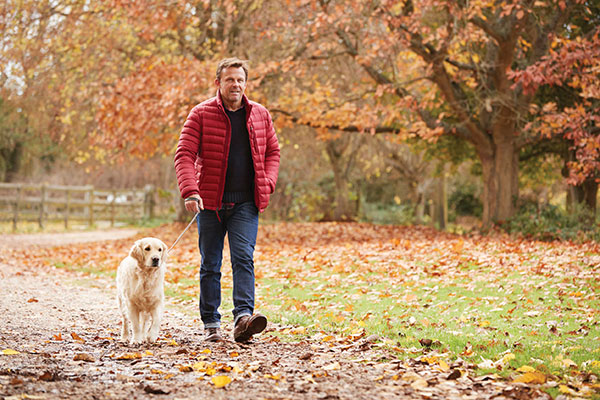Stay Active Through Cancer
by Linda Gottlieb
You probably already know that exercise is an important part of staying healthy and can even help prevent disease. But what if you have cancer? What can exercise do for you?
Many people living with cancer are eager to learn new ways to support their health. But some buy in to the misconception that because they have cancer, they can’t exercise. While it’s true that in the past doctors instructed people with cancer to avoid physical activity in order to get more rest – and this may still be the case for someone who has recently had surgery or for whom exercise causes an unhealthy increase in heart rate, feelings of dizziness, or severe pain – research has shown that exercise is actually beneficial for many cancer survivors. In fact, the American Cancer Society now recommends that survivors adhere to the same exercise guidelines as the general population: a minimum of 150 minutes of cardiovascular activity per week.
The Benefits
Studies consistently show three benefits of exercise: improved physical fitness, greater self-esteem and well-being, and decreased levels of anxiety, depression, and fatigue. Because a cancer diagnosis and ensuing treatments can leave you feeling depressed, tired, and lethargic, this research is extremely encouraging.
Furthermore, exercise can provide you with a sense of control over your life, helping you feel like an active participant within your healthcare team.
Getting Started
Exercise doesn’t have to be a complicated activity. Simply walking to the mailbox, taking a stroll around the perimeter of your home, or walking up and down the stairs can be a terrific start. Take one step at a time (literally), and progress at your own pace. Don’t measure yourself against anyone else, especially the super-fit models and actors you see on TV or in magazines.
Make a Commitment to Fitness!
Walking is a great physical activity. It’s something most people can do, and it requires minimum monetary investment. No fancy equipment needed. Here are three tips for making – and keeping – a commitment to incorporate physical activity into your everyday life:
1. Exercise first. The best time to exercise is first thing in the morning, before your day gets rolling and interruptions get in your way. Even taking a five-minute walk outside or marching in place in your living room sets you up for more energy throughout your day.
2. Be prepared. Life is hectic, but sometimes a meeting is delayed or your lunch plans change, leaving you with a little extra time on your hands. Keep a pair of sneakers under your desk, near your front door, or in your car so you’re always ready to take advantage of your unexpected free time with a quick walk.
3. Apply the “take five” contract. This is by far my favorite exercise tip: Even if you don’t feel like it, make a “contract” with yourself to walk for just five minutes every day. If you still aren’t feeling motivated when the five minutes is up, you have permission to stop. But in most cases, you’ll probably find that you feel better after you’ve gotten started and don’t want to stop at just five minutes.
As you ease into an exercise routine, it might be helpful to record your progress, thoughts, and feelings in a journal. This will provide a log of the positive results your exercise efforts have returned, like improved sleep, decreased body fat, and a brighter view of your future. When you see how far you’ve come, your confidence will soar.
Before starting any exercise program, it’s important to talk with your doctor about the possible risks. But in most cases, the benefits of exercise far exceed any possible risks for cancer survivors. Exercise might be just what you need to help you get back to an improved level of physical and psychological functioning.
 American Cancer Society/American College of Sports Medicine cancer exercise trainer Linda Gottlieb has over 30 years experience helping people embrace exercise for healthy aging, disease management, and pre- and post-surgical recovery. She has held research positions at Yale University working on national clinical trials regarding the benefit of exercise for cancer survivors and is the author of No Ifs, Ands, or Butts: How to Turn the Top 10 Exercise Excuses into Fitness Triumphs. Linda can be reached at Linda@FitTraining.net.
American Cancer Society/American College of Sports Medicine cancer exercise trainer Linda Gottlieb has over 30 years experience helping people embrace exercise for healthy aging, disease management, and pre- and post-surgical recovery. She has held research positions at Yale University working on national clinical trials regarding the benefit of exercise for cancer survivors and is the author of No Ifs, Ands, or Butts: How to Turn the Top 10 Exercise Excuses into Fitness Triumphs. Linda can be reached at Linda@FitTraining.net.
This article was published in Coping® with Cancer magazine, September/October 2018.


